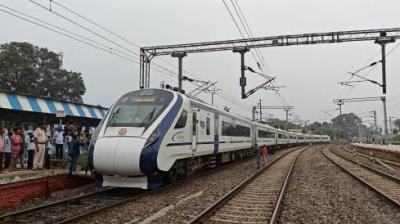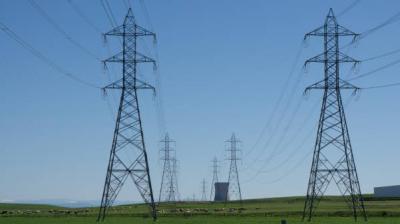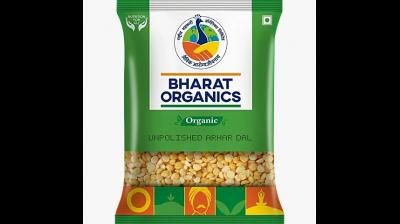
1st November: A Remarkable Day for India's Unity in Diversity and a Great Example of "Ek Bharat, Shreshtha Bharat"
1st November: A Remarkable Day for India's Unity in Diversity and a Great Example of "Ek Bharat, Shreshtha Bharat"
Today, November 1st, marks the Foundation Day for many Indian States and Union Territories. This day commemorates the States Reorganisation Act 1956, which aimed at the reconstruction of the nation's administrative map based on linguistic lines, showcasing India's rich heritage of unity in diversity.
Eight States and Five Union Territories celebrate their formation anniversaries today. Let's dive deeper into the details of each state:
1. God's Own Country: Kerala (1956)- Known for its lush greenery, coconuts, and as an Ayurvedic medicine hub, It had a unique global achievement: it was the first fully literate state, realized through a people-led movement in 1991.It also hosted the world's first democratically elected communist government, a significant global political achivement.
2. IT Hub with India's Silicon Valley: Karnataka (1956)- Innovation in Karnataka is not only limited to technology but also extends to space science; Karnataka is home to the Indian Space Research Organisation (ISRO), established in 1969. It is India's largest producer of coffee, silk, and gold. The ancient village of Mattur in the Shimoga district is one of the few sanskrit speaking places in the world.It is also home to the world's largest monolithic statue, the Gomateshwara statue, and the oldest library in India, the Oriental Research Library in Mysore,reflecting its rich history.
3. Heart of India : Madhya Pradesh (1956)- This state, known for its rich flora, fauna, and cultural heritage, is also known as the ‘Tiger State of India’ for its large tiger population and numerous national parks.It is home to the Khajuraho Temples, Bhimbetka Rock Shelters (a UNESCO World Heritage Site), Sanchi Stupa, famous Chanderi sarees, and abundant mineral resources exemplifying nature’s richness.It also houses one of Asia’s largest dinosaur fossil parks — the Ghugwa National Fossil Park in Dindori District.
4. Land of Temples: Tamil Nadu (1956)- Called the Land of the World’s Oldest Living Language, Tamil Nadu has a literary legacy of more than 2000 years.Temples like the Meenakshi Temple and Brihadishwarar Temple, classical arts such as Bharatanatyam and Carnatic music, and the Sangam poems (a UNESCO-recognized literary heritage) define its culture.The Mahabalipuram monuments and beaches, Nilgiri Mountain Railway, and hill stations like Ooty make it a popular travel destination.
5. Kohinoor of India: Andhra Pradesh (1956)- A major producer of handwoven silk and cotton sarees, Andhra Pradesh is often called the Kohinoor of India.It is home to India’s largest uranium mine, the Tummalapalle Mine, which contributes significantly to India’s nuclear energy program.The state also has the Amaravati Stupa, one of Asia’s oldest and largest Buddhist monuments.Other examples of its rich heritage include the Tirumala Venkateswara Temple in Tirupati and the Kuchipudi dance form.Natural wonders like Gandikota (the Grand Canyon of India), Araku Valley, and Visakhapatnam’s beaches make Andhra Pradesh a true gem.
6. Granary of India: Punjab (1966)- Known as the Land of Five Rivers, Punjab is the heartland of hospitality and vibrant culture.It is called the Granary of India for its significant role in national food production and It is the birthplace of India’s Green Revolution.The Harmandir Sahib (Golden Temple) in Amritsar has the world’s largest community kitchen.Festivals like Lohri and Baisakhi, and dishes like Makki di Roti and Sarson da Saag, add different flavours to the life of Punjab’s people.
7. Milk Pail of India: Haryana (1966)- A major milk producer and an important player in India’s sports and military sectors, Haryana is known for its vibrant folk dance, music, festivals, and cuisine.Spiritually, it holds great significance as the epic battle of Mahabharata was fought here in Kurukshetra.Haryana is one of India’s top sports hubs, with significant contributions in different fields.The brave people of Haryana have contributed not only to freedom struggles but continue to serve the nation in its armed forces.
8.Rice Bowl of India: Chhattisgarh (2000)- A major rice producer, this state is also known for its rich mineral resources, powering India’s steel and energy industries.It has one of the highest numbers of waterfalls in India and is often called the “Niagara of India” for its Chitrakoot Falls.Chhattisgarh’s tribal culture is showcased through art forms like the Pandvani folk art and intricate handicrafts, including terracotta work and tribal jewellery.It is also home to ancient temples, wildlife sanctuaries, and national parks like Kanger Ghati National Park and Achanakmar Tiger Reserve.
This ends our talk on the states.
Five Union Territories — Chandigarh (1966), Delhi (1956), Lakshadweep (1956), Andaman and Nicobar Islands (1956), and Puducherry (1962) — also celebrate their Foundation Day on 1st November.
We will cover them in another article.
Thanks for reading!













